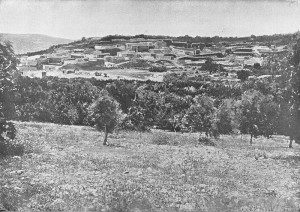
(Click to enlarge.)
Just a brief note, today, on the way, theologically, in which the gospel of John employs the miracles of of Jesus:
Characteristically, John uses the term σημεῖον (semeion, “sign”) to refer to the miraculous acts performed by Christ. For example, in today’s reading, at John 2:11, the gospel is summing up the story of the miracle of changing water into wine: “This, the first of his signs [ταύτην . . . ἀρχὴν τῶν σημείων], Jesus did at Cana in Galilee, and manifested his glory; and his disciples believed in him.”
Plainly, in John’s view, these acts aren’t important merely because they’re powerful, unexpected, and humanly inexplicable, but because they point to something else. They signify something.
Thus, toward the end of the gospel, in 20:30-31, John summarizes what he’s written (and what he’s omitted) with this comment:
“And many other signs truly did Jesus in the presence of his disciples, which are not written in this book: But these are written, that ye might believe that Jesus is the Christ, the Son of God; and that believing ye might have life through his name.”
The author of John makes no pretense here of writing as a disinterested, scientific historian. He’s trying to persuade his readers (or, mostly, in ancient times, his hearers) to accept Jesus as their Lord and Savior. That’s not to say, of course, that his claims aren’t historically true. It’s simply to say that historiography, as such, isn’t his primary goal.












